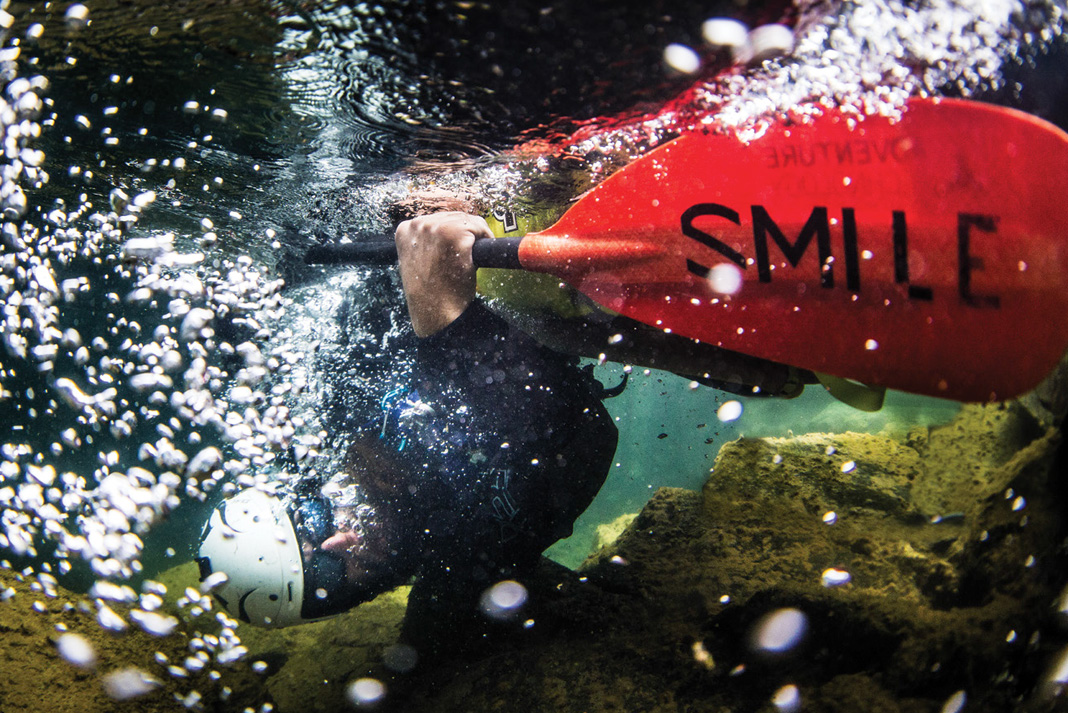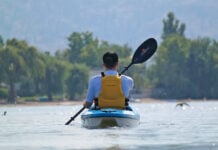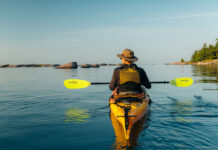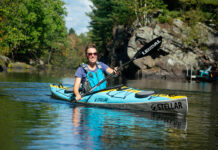So many aspects of whitewater kayaking are counter to our natural instincts. Bring your head up last. Lean towards the rock. Don’t get in the back seat. These well-meaning words of advice are recited to nearly every single beginner kayaker; they’re our mantras to conquering our natural reactions. After 20 years of kayaking and 15 years of class V, I have seen a lot of teaching techniques, successes and failures. There is some advice that I have found tremendously helpful and powerful for early paddlers, yet it’s not as often repeated.
Stay positive at all times
Stay positive at all times. Look positive. Point positive. Speak positive. These maxims are not just for self-help gurus. When we are beginners, we are thrown into the new and dynamic world of the river. Our friends say that we will love the sport, but the raw power of nature is intimidating. As we paddle down the river, our first instinct is to stare right at the menacing rocks and hydraulics that we are trying to avoid. And what happens? Our boats go right to them.
Look where you want to go
The golden rule of kayaking—and nearly every sport—is to look where you want to go. This applies to skiing, mountain biking, gymnastics, car racing and everything in between. When we look at something on the river, our shoulders square up with our head, and then our body and boat naturally track toward what we’re looking at. So for beginner kayakers, a huge breakthrough occurs once we learn to look positive and focus on where we want to go. Ignoring the hazards.

PHOTO: TYLER ROEMER
As paddlers develop more skills and move up to reading and running class II and III whitewater, they occasionally find themselves pointing out hazards to their friends as they paddle down the river. They are trying to be helpful, but what does pointing a particular direction mean in river language? “Go there!”
This is a common mistake at this stage in a kayaker’s development and one that is tremendously important to overcome. We carry the ultimate responsibility with us on the river—that of our friends’ safety. Pointing positive and learning how to communicate properly on the water is critical to a paddler’s development into and beyond the intermediate stage.
Once paddlers are comfortable in class III whitewater and are looking and pointing positive, we are ready to take the next step. It’s time to consider how far we want to take our kayaking, and double down on practicing every one of our skills so we can enter the class IV and maybe even class V realm. It is at this point that another mistake tends to rear its ugly head.
We all have that friend who starts directions for a difficult rapid by saying, “This is the one that ripped Bobby’s arm off,” or “Whatever you do, don’t go left!” What does this language create in our minds? Dread. This is absolutely the worst thing that we can tell a nervous paddler on their first time down a challenging river.
Speak positive
Instead of leading with the hazards, it’s far more effective to speak positive and mention only where we want to go as opposed to where we don’t want to go. The time to show the true severity of hazards is either during an on-land scout—that information is necessary to make a decision to run the rapid—or after running the rapid. Any other time is a disservice to the person being guided.
These three rules are so simple, yet so commonly missed by paddlers at a variety of different skill levels. Always look, point and think positive. It will change your game.
Chris Gragtmans is a champion kayak and standup paddleboard athlete, business owner and professional speaker.








